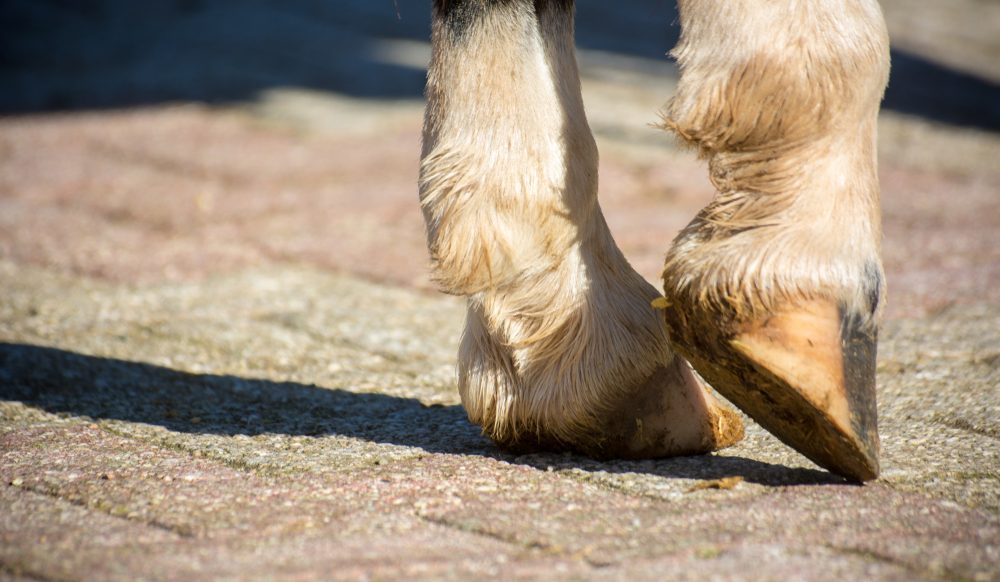How to Trim Horse Hooves Naturally for Healthier Horses?
Share
As a health-conscious pet owner, one of the essential aspects of ensuring your horse's well-being is understanding how to trim horse hooves naturally. Proper hoof care is crucial for your horse's overall health, comfort, and performance. Neglecting this practice can lead to serious health complications and affect their quality of life. In this article, we will guide you through the natural process of trimming horse hooves while emphasizing the importance of maintaining hoof health.
Horses, like any living creatures, require regular care. A well-maintained hoof can prevent issues like lameness, infections, and other hoof-related ailments. Lets delve deeper into the topic of hoof trimming and its benefits.

The Importance of Natural Hoof Care
Before we discuss the specifics of trimming, it is vital to understand why maintaining your horse's hooves naturally is preferred. Natural hoof care aligns closely with the horse's natural instincts and biomechanical function. Over time, the horse's hooves can adapt and strengthen, leading to better overall health.
Benefits of Trimming Horse Hooves Naturally
When you learn how to trim horse hooves naturally, you can enjoy various benefits:
- Improved blood circulation in the hooves.
- Prevention of hoof-related ailments.
- Enhanced mobility and performance.
- Lower costs associated with veterinary care.
- Strengthened bond between you and your horse.

Essential Tools for Trimming Horse Hooves
To effectively trim your horse's hooves, you will need some essential tools:
- Hoof pick: Used to clean the sole and check for any debris.
- Farrier's rasp: Ideal for smoothing rough edges after trimming.
- Hoof knife: Useful for removing any excess frog and sole.
- Hoof trimmers: Designed to cut the hoof wall cleanly.
- Supportive Stand: Provides stability for the horse during trimming.

Step-by-Step Guide on How to Trim Horse Hooves Naturally
This detailed step-by-step guide will help you safely and effectively trim your horse's hooves. Always ensure the horse is in a comfortable position before you begin.
1. Prepare the Environment
Choose a calm and quiet environment for the trimming process. This will help your horse feel at ease. Make sure you have all your tools at hand.
2. Inspect the Hoof
Before trimming, carefully clean and examine each hoof. Look for signs of infection or abnormalities. If anything seems amiss, consult a veterinarian.
3. Clean the Hoof
Use a hoof pick to remove dirt, stones, and debris from the hoof. Pay extra attention to the frog and sole area.
4. Start Trimming
Begin with the front part of the hoof, following the natural shape. Trim the hoof wall carefully, keeping the cuts flush without leaving jagged edges. Use the hoof knife for any excess sole and to maintain the frog's shape.
5. Use the Rasp
After trimming, use the rasp to create a smoother finish. This ensures that the hoof is even and free from sharp edges. Repeat this process for each hoof, ensuring balanced trimming on all sides.
6. Post-Trim Check
After trimming, closely examine each hoof again. Ensure everything looks even and there are no signs of distress.

How Often Should You Trim Your Horse's Hooves?
Regular trimming is key to maintaining hoof health. On average, horses should have their hooves trimmed every 6 to 8 weeks. However, factors such as hoof growth rate, workload, and environmental conditions may influence this schedule. For additional information, check out this article on trimming frequency.
Signs Your Horse Needs Hoof Trimming
Be attentive to any signs that indicate your horse may need a trim:
- Visual overgrowth of hooves.
- Discomfort while walking.
- Visible cracks or damage.
- Development of excessive heat in the hooves.
Common Hoof Problems and Their Prevention
Understanding common hoof issues can also help you in your trimming journey. Here are some prevalent hoof problems:
- Thrush: A bacterial infection that can cause pain and lameness.
- Cracks: Often due to overgrowth or injury.
- White line disease: An infection leading to separations in the hoof wall.
To prevent these conditions, regular trimming, proper diet, and good hygiene are essential components. If you notice any concerning signs, reach out for professional help.
Incorporating Traditional vs. Natural Techniques
While there are many methods for hoof trimming, natural techniques focus on maintaining the horse's natural hoof shape and functionality. Traditional techniques often utilize shoes, which can sometimes hinder natural hoof growth. By learning how to trim horse hooves naturally, you can foster your horse's ability to move naturally and comfortably.
Conclusion
Learning how to trim horse hooves naturally can be a rewarding and beneficial journey for both you and your horse. Not only does it help in maintaining hoof health, but it also fosters a deeper bond between you and your equine companion. Always remember to prioritize safety, and when in doubt, consult with professionals for advice. Together, we can ensure our horses not only thrive but also lead fulfilled lives.
FAQs
1. How do I know if I am trimming my horse's hooves correctly?
Regularly check for evenness and smoothness in the hoof, and watch for signs of discomfort or lameness in your horse.
2. Can I trim my horse's hooves on my own?
Yes, with proper tools and knowledge. However, it's advisable to consult a professional farrier, especially for beginners.
3. What do I do if my horse has overgrown hooves?
Start trimming gradually and consider consulting a professional farrier for comprehensive care to avoid hurting the horse.
As an Amazon Associate, I earn from qualifying purchases.
